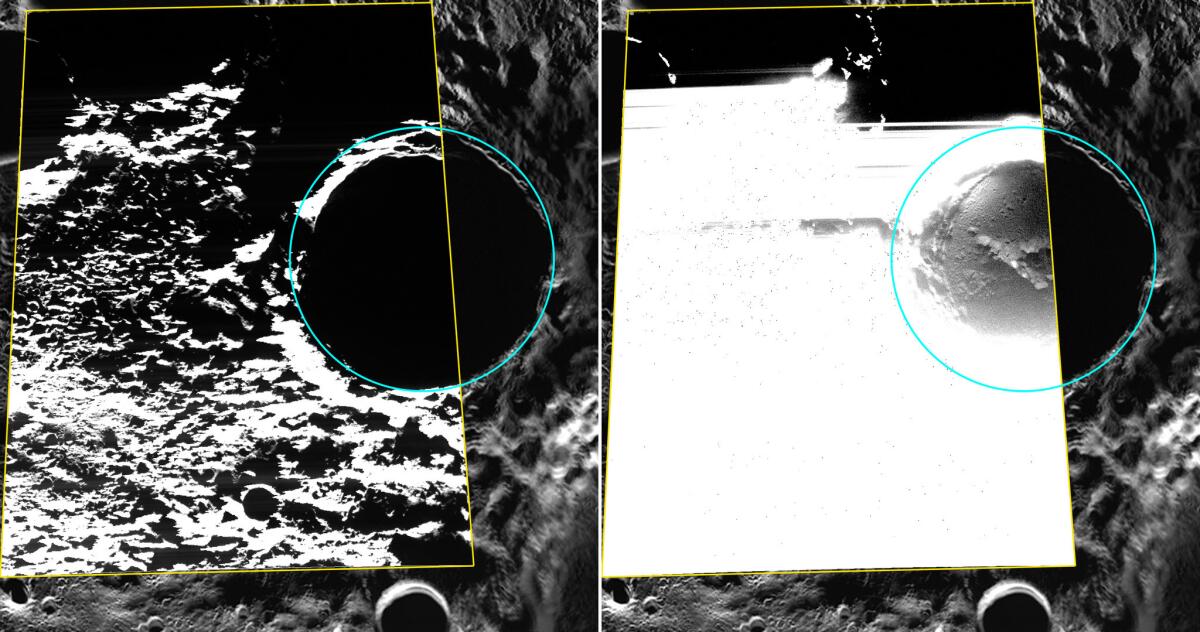Crazy but true: Messenger spacecraft spots ice at Mercury’s north pole

Kandinsky crater is located near Mercury’s north pole and is one of the spots where NASA’s Messenger spacecraft found signs of water ice.
- Share via
NASA’s Messenger spacecraft has sent back its first visible-light images of water ice on Mercury, the tiny charbroiled planet that orbits closest to the sun.
The findings, described in the journal Geology, reveal that the ice deposits look surprisingly “fresh” – and hint that water could have been very recently delivered to rocky little Mercury.
Even though Mercury sits less than 36 million miles from the sun – which is less than two-fifths of the Earth’s comfortable 93 million miles from sun – some ice still manages to cling to the planet’s surface. That’s because the ice lies at the poles, in permanently shadowed regions inside craters that are eternally shielded from sunlight and remain very, very cold.
More than two decades ago, ground-based radar observations picked up signs of this polar ice, and the Messenger spacecraft later lent support to the idea with its own suite of instruments. But it’s tough to actually see these permanently shadowed regions with the spacecraft’s visible-light camera because, well, it’s dark there. But recently, the team was able to refine the images of the ice-deposit surfaces with the help of what little light was reflecting off the crater walls.
The scientists examined Prokofiev, which at roughly 69.6 miles in diameter is the largest crater at Mercury’s north pole thought to have water-ice deposits. There, the surface ice had a “cratered” texture – showing that it was placed there more recently than the smaller underlying craters.
And in other spots, such as Berlioz crater, the researchers found that the water ice was “covered by a thin layer of dark, organic-rich volatile material.” The boundaries of those icy regions were surprisingly sharp – they hadn’t been in place long enough to get smoothed out.
“The sharp boundaries indicate that the volatile deposits at Mercury’s poles are geologically young, relative to the time scale for lateral mixing by impacts,” the study authors wrote, “and either are restored at the surface through an ongoing process or were delivered to the planet recently.”
To put that idea in perspective, estimates indicate that there could be roughly enough water-ice on Mercury to fill Lake Ontario. And if at least some of that water is indeed being delivered to the planet, it sheds new light on dynamics in the inner solar system, the scientists said.
“If Mercury’s currently substantial polar volatile inventory is the product of the most recent portion of a longer process,” the study authors wrote, “then a considerable mass of volatiles may have been delivered to the inner Solar System throughout its history.”
Think Mercury’s the hottest planet in the solar system? Think again! It’s Venus, heated by its thick, carbon dioxide-rich atmosphere. For more science news, follow @aminawrite on Twitter.





